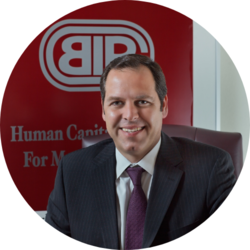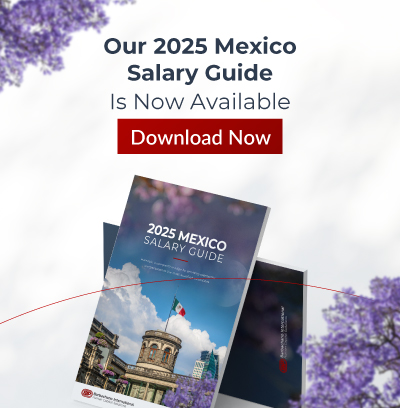
Mexico Border Manufacturing Recruitment Challenges And Strategies In 2019, According To Industry Leaders
Technology disruptions. Generational shifts. Remote and flexible work. The increased focus on employee engagement and strengthening culture. This is today’s world of human resources. There’s no way around the secret to sustained growth: keeping up with current trends is survival. Organizations that don’t adapt to the demands of this new reality will quickly fall behind their competitors.
This is especially true in Mexico, as companies have to compete with strong attraction factors in the U.S. and Canadian labor markets. According to data from Mexico’s National Institute of Statistics and Geography, more than two million workers are employed in over 5,000 maquiladora or export assembly plants, with many located in northern Mexico, such as Tijuana, Ciudad Juarez, and Reynosa, which lie directly across the border from the U.S. cities of San Diego, El Paso, and McAllen, respectively. With some 600 plants that employ more than 200,000 people, Tijuana has more maquiladoras than any other city in Mexico.
In an exclusive interview with Barbachano International, Ulises Araiza, President of the Tijuana HR Association (ARHITAC), and Luis Manuel Hernandez, President of the Maquiladora and Export Industry Association in Tijuana (INDEX), broke down topics regarding the Mexican labor market and recruitment strategies for the maquiladora industry in 2019.
What is your outlook for job openings and employment in Northern Mexico this year?
Ulises: According to figures from the manufacturing industry, there is estimated growth in Tijuana with a forecast of 13,500 job openings for direct employees in the first three months of the year, which leads us to believe that there will be a need for more than 1,500 vacancies of indirect and administrative personnel.
Luis Manuel: With this whole situation of doubling the minimum wage to 176.72 Pesos ($9.15 USD minimum daily wage) in the Mexican northern border region, people are going to start migrating from the south to the north. As a result, businesses will stop having qualified talent in the south and they will be forced to automate to cope with the labor shortage and avoid losing market share. The salary increase in the border area also means people are going to want to move there (increasing workforce availability) but that’s going to create a social issue. As with any large influx of migration, the impact it can have on existing infrastructure requires extra consideration because we currently don’t have the capital required to bring new housing, more police, more roads, water, light, etc. for all those people who will be arriving, and accommodations could be challenging.
In your opinion, what are the biggest challenge(s) or obstacle(s) of recruiting talent in Mexico’s border area this year?
Ulises: The industry faces challenges that already exist today: growth from established businesses and companies initiating operations, which spurs the creation of new jobs and the need to attract top talent. The arrival of aerospace, automotive, medical and electronic companies to other regions of the country have generated greater competition and leveling salaries, which makes it more difficult to compete in order to relocate talent to the border region. New technologies and processes are revolutionizing the industry and we don’t have enough qualified talent, so we need to expand our talent acquisition strategies and consider options such as remote work, home office, outsourcing, etc. We have great educational institutions in the region that are updating their course study programs in order to keep up with the industry, in terms of language, certifications, tools, values, etc.
Luis Manuel: Few companies that I know in Mexico do a good job with their branding. What’s your company’s story? What problem does
What has been your recent experience recruiting talent? Did you face difficulties? If so, what were they?
Ulises: Product and software design is a relatively new practice to the region, which has generated a requirement of specialized personnel in the areas of software design, test, advanced engineering, project management, all of which are not readily available in the region and have to be hired from Central Mexico: Jalisco, Queretaro, Guanajuato, Aguascalientes, etc. Companies like Continental and Intel have their design centers in these states and are providing added benefits and perks to their key staff so that they aren’t successfully recruited by other companies. Organizations have a high need for leaders who are collaborative, people-centered, and have a strong adherence to values.
Luis Manuel: In my opinion, intangible benefits aren’t well-defined. Maybe your company can’t match the starting salary of bigger companies, but the intangibles can be just as effective (if not more so) than monetary perks, such as workplace culture and satisfaction, advancement opportunities, work-life balance, autonomy, remote work, etc. This framework isn’t very well defined and that’s what I have personally had difficulty with. We have to innovate and improve our practices to gain a competitive advantage, but many companies resist change. At the end of the day, good employees will be attracted to intangibles and generous rewards.
What recruitment strategies have you (or affiliated companies) implemented in the past and/or recently? What worked most effectively?
Ulises: Companies have been using different recruitment strategies, such as implementing employee referral bonuses, using nationwide suppliers with experience in highly-focused markets to perform virtual and face-to-face employment events, open house job interviews, work-at-home options, flexible schedules, giving workers access to innovative spaces they find agreeable so that they’re able to concentrate better and think more positive about work, training, developing internal talent, and providing co-working or office spaces in other cities.
Luis Manuel: We use social media to recruit, but not to communicate with current employees. I’ve seen many companies take advantage of the company calendar by celebrating birthdays, anniversaries, new employees and such, and sharing photos online and building a conversation with staff, which increases engagement and potentially draws in outsiders. It allows candidates to see what your culture is like and if they want to be a part of it.
What recruitment sources and strategies will your organization turn to in order to attract top talent in 2019?
Ulises: Job fairs, headhunters, job marketing and advertising, employee referral bonuses, and open house job interviews.
Luis Manuel: We will train current star employees to move into middle and upper management, build up our brand and brand personality, and rethink our benefits package by offering more value to our employees.
In a job market where companies have to fight for the best talent, never has there been a greater need to examine and prioritize workforce strategies that will increase the quality of new hires while keeping current staff happy and healthy.
Top players know that any career opportunity worth pursuing must align with their life’s purpose. Organizations that want to attract the next cycle of superstars need to step up and bring more to the table. Old-fashioned methods like high wages are no longer cutting it. If a candidate’s heart and mind aren’t in it, no number of zeros on a paycheck will change that. The best people are not motivated by money. They are motivated by meaning, autonomy, flexibility

By Fernando Ortiz-Barbachano
President and CEO of Barbachano International (BIP),
The Human Capital Solutions leader in Mexico, Latin America, and the USA, offering high-impact executive search, executive coaching, and outplacement.



